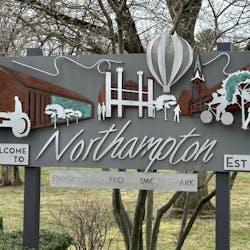Like most of today’s global economy, the telecommunications industry faces myriad obstacles that threaten existing processes and practices. These challenges require wholesale, radical changes to the way the industry functions. One of the most significant is finding a commercially viable way to extend full-fiber broadband to remote, previously unreachable areas of the country, in line with the United States Federal Communications Commission launch of a 5G Fast Plan for nationwide coverage. Another crucial, closely linked challenge relates to customer service, specifically, ensuring that it keeps pace with rapidly evolving technology as well as consumer expectation.
Customer service is key
The good news is that full-fiber and 5G broadband are likely to bring about a much-needed sea-change in telecom customer service. Fiber roll-outs will help ensure all aspects of the customer journey match the performance of the technology and keep in line with the expectations set by competing providers. Wide-ranging geospatial data on everything from the position to the condition of customer connections can now be instantly available across the organization. This ability encourages “smart” call center and engineering services that have the same view of the network as crews in the field. The industry can also implement predictive, data-driven customer service of the likes already commonly seen in sectors such as e-retail. It’s painfully ironic that the broadband industry’s own customer service model lags far behind the “data economy” that their networks underpin!
Transforming legacy models avoids a ‘vicious circle’
A recent survey from consumer rights service FairShake suggested that more than 20 million American households had unresolved complaints against their ISP relating to issues including poor service and slow speed. Meanwhile, up to a third (40 million) of households were estimated to have had a dispute against their ISP in the last year, with only 50% of these being resolved. While this proportion of unaddressed problems is certainly a concern, the wider volume of complaints reported by customers is indicative of deeper failings in the understanding of network assets and the management of operations.
Chief among the reasons for these issues are the data flow bottlenecks created by centralized legacy Geospatial Information Systems (GIS) that fuel a downward spiral of data quality with ever-growing as-built backlogs. Not only are these systems complex to use and often inaccessible to non-specialist members of the organization, they are also frequently unavailable to most field technicians, contractors, call center staff, and customers. Out-of-date and inaccurate network data results in unnecessary callouts, repeated truck rolls, customer complaints, and needless call center requests. In fact, one operator reported that 40% of engineers’ time was spent answering internal questions from staff relating to the location of assets or the nature of a customer connection.
To address this issue, it is essential to transform the legacy, centralized GIS model that creates such operational bottlenecks and hampers the timely capture and sharing of critical network data. A more decentralized, mobile-centric approach empowers field crews, call center staff, and customers, bringing swifter complaint resolution and wherever possible enabling “self-service” access to data to reduce the burden on overwhelmed switchboards.
Most field technicians today do not have easy access to accurate network data, compromising the ability to locate problems or even plan ahead to resolve a call first time. Poorly accessed network data is also more likely to be inaccurate, as it cannot be easily corrected by field workers with the details of recent work or other changes. This creates a “vicious downward spiral” of incorrect data, costly delays, and cancellations to repairs or installations that increases the risk of problem escalation and network downtime.
The need for decentralization and ‘mobile-first’
This collaborative, decentralized approach allows network providers to turn the previous vicious circle to a virtuous one, in which field technicians enjoy comprehensive, real-time network data. Constant updates provide a fast, efficient, and continuous stream of improving data quality, leading to vastly superior service.
Indeed, customers should wherever possible be harnessed as valuable data contributors in their own right. Customer satisfaction and self-service error reporting that integrates geospatial network data provides a strong indicator of the quality of network service and asset information, while empowering users to take a greater level of control. A high volume of customer complaints and a poor rate of self-service in one area can point to a fundamental network issue that could be proactively corrected to prevent more severe network downtime.
A new model of customer service is urgently needed to achieve the vision of nationwide full-fiber broadband to drive economic and social growth and capitalize on large, untapped markets. The industry must create adaptive, predictive, and open telecom network strategies that embrace live sensor data and input from staff, contractors, and customers across the network.
Creating a self-improving virtuous circle to maximize network data quality and share an accurate geospatial network view with all stakeholders is vital to ensuring the best possible customer service, as well as meeting technology standards and network rollout objectives. The crucial step that the telecom industry must take is opening up network data to more stakeholders than ever before. This will drive smarter, more user-friendly customer service grounded in an accessible, clear, and current view of the network on a “single pane of glass” that maximizes collaboration and productivity.
Jay Cadman is general manager, Americas of IQGeo.








